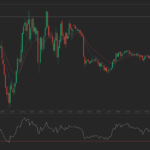WTI and Brent futures closed the week relatively unchanged. A plethora of data signaled markets both ways, with the Eurozone unveiling a stimulus plan for the economy, while the US appeared more confident. China posted conflicting reports, ahead of key data next week.
West Texas Intermediate futures for settlement in July closed for $102.71 per barrel on Friday on the New York Mercantile Exchange, up 0.18% for the day and logging on par with the previous week. Weekly high and low stood at, respectively, $103.69 per barrel on Wednesday, after the US inventories report, and $101.60 per barrel on Thursday. Last week the US benchmark lost about 1.5%.
“We’re stuck in a $100-to-$105 range and are within a couple cents of the midpoint,” said for Bloomberg Kyle Cooper, director of commodities research at IAF Advisors in Houston. “There’s clearly been a definitive lack of conviction in the market this week. In recent weeks there’s been at least a bias in either an up or down direction, but this week there’s none.”
Meanwhile on the ICE in London, Brent futures due in July recorded a 0.17% daily loss to close for $108.61 per barrel on Friday, also dropping about 0.6% for the week. Brent’s premium to WTI stood at $5.90, narrowing last week’s closing margin of $6.70. Weekly high and low were at, respectively, $109.87 per barrel on Monday and $107.77 per barrel on Thursday. Last week the European brand dropped about 1%.
US economic outlook
On Friday, the US, which accounts for 21% of total oil consumption, posted key employment data for May. New nonfarm payrolls stood at 217 000, as predicted, after 288 000 were added in April. Unemployment rate stood same as last month at 6.3%, which is the lowest level since September 2008, beating expectations of a slight increase.
“The jobs number is being perceived as a positive sign for the overall economy and bullish for demand,” said for Bloomberg Bob Yawger, director of the futures division at Mizuho Securities USA Inc. in New York.
Earlier, on Thursday the weekly jobless claims report for the seven day through May 31 was posted. Initial applications for unemployment benefits increased more than expected to 312 000, after 300 000 were logged for the previous week. Meanwhile, continuing claims for the week ended May 24 were reported at 2.603 million, improving on expectations and on the previous standing.
Previously, ISM reported significantly growing manufacturing and services sectors in the US, boosting sentiment for the worlds top oil-consuming economy.
Next week several reports are due. Retail sales are expected to post a preliminary 0.4% monthly growth for May, after muted 0.1% increase the previous month.
Later next week, on Friday PPI for May will be revealed. Analysts project a 0.3% gain on a monthly basis and 1.9% year-on-year.
Eurozone
On Thursday the European Central Bank revealed the long-awaited interest rate decision. Borrowing costs were moved downwards to 0.15%, which is higher than the forecast 0.10%. Meanwhile, deposit rates were moved to negative territory, and now stand at -0.10%, which means ECB will tax commercial banks for keeping their money in deposit. The measures are aimed at revitalizing the European credit market, in order to breathe life into the economy and spur growth.
Also on Thursday, the Eurozone logged retail sales for April at 0.4% on a monthly basis, beating expectations and improving on the downgraded 0.1% growth from March. Elsewhere, Germany, the Bloc’s top economy, posted slightly growing industrial production in April, after a drop in March.
Previously, the Eurozone posted more disappointing data, with CPI dropping to 0.5%, and GDP at a muted 0.2% quarterly growth, while services PMI logged a slowdown in the sectors expansion.
Next week the Bloc will report on industrial production for April, with expectations of slight improvement. There will also be data on the final member-states readings for CPI for May and Q1 employment in the Eurozone, as well as a trade balance report.
China
Thursday saw HSBC post its reading on services PMI for May in China, where about 11% of all oil is consumed. The figure, which measures private sector services growth, was logged at 50.7, after 51.4 for April. A reading above 50 means expansion, while anything below is read for contraction, and the greater the figure is from 50, the bigger the expansion or contraction is.
Previously, HSBC reported factory activities in China had shrunk by more than previously, while the official government’s reports revealed an expanding manufacturing sector and a significantly growing services sector, conflicting with HSBC’s readings (Do note the government’s services gauge includes non private companies).
Early on Sunday China will report exports, imports and trade balance, with expectations of sizable growths both ways, after muted expansion was reported last month.
Next week, Monday will reveal Chinas May CPI, forecast at a -0.1% on a monthly basis, after -0.3% for the previous month, while on an annual basis consumer prices have probably increased by 2.4% in May, after 1.8% in April. Also, Chinese PPI for May will be reported, and analysts expect a standing of -1.5%, after -2.0% in April.
Later next week, Chinese industrial production for May will be posted on Friday. Experts suggest a steady 8.8% growth year-on-year, after 8.7% in April. Also due on Friday, reports on fixed assets investments and retail sales for May are expected to reveal steady annual growth for both.
US inventories report
Wednesday’s Energy Information Administration (EIA) report on US oil inventories for the week through May 30 revealed a sizable drop for commercial crude supplies. Stockpiles were reported to have lost 3.4 million barrels, with a massive weekly drop for imports for a second week, which now have decreased by almost 1.5 million barrels per day (bpd) since mid May.
Crude in storage at Cushing, Oklahoma, declined by a further 0.3 million, while hubs at the Gulf Coast also logged a sizable drop of 6 million barrels.
Meanwhile, gasoline inventories added 0.2 million barrels, while distillate fuels supplies grew by more than 2 million.
Ukraine
Petro Poroshenko, who received 54% of the vote on May 25, was sworn in as President of Ukraine earlier today. He said he will not seek vengeance against the pro-Russian separatists, and that he is ready to make concessions towards a peaceful resolution of the conflict, but urged all rebels to lay down arms.
“I dont want war. I dont want revenge, despite the huge sacrifice of the Ukrainian people,” he said, the BBC reported, adding: “Talking to gangsters and killers is not our path.”
Russian officials said the inauguration speech was of “promising intent”.
“The tension in Russia and Ukraine has eased somewhat post the Ukrainian elections,” said for Reuters Mark Keenan, head of commodities research for Asia at Societe Generale.
However, fighting continued, even as the inauguration was proceeding, some reports say, according to the BBC. Sloviansk and a number of border towns and army bases saw intense battles recently, with the rebels seizing posts and inflicting casualties on Kievs troops.





